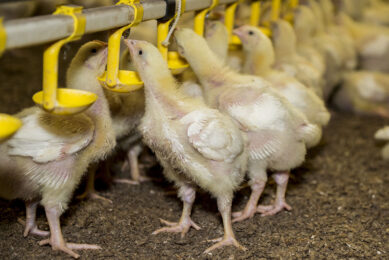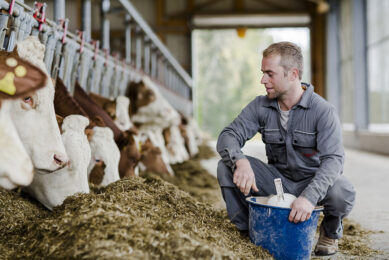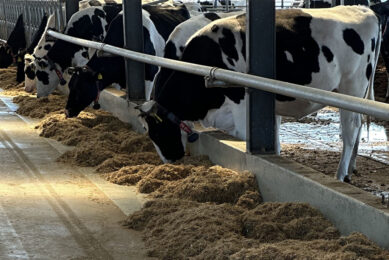Trigger the brain to manage heat stress

It is important to preserve an animal’s natural behaviour to maintain optimal performance. A neurosensory solution which modulates the stress message directly into the brain has proven to limit the negative impact of stress by improving animal flexibility while facing environmental challenges.
Heat stress in animal production is a worldwide problem, which occurs constantly in tropical countries and often in temperate countries during summer season. This phenomenon has a negative impact on animal production, as it decreases the animals’ comfort and penalises their performance. Heat stress occurs when an animal is no longer capable of naturally eliminating excess body heat. Heat build-up is caused by external temperatures and a high level of relative humidity, which overtakes the physiological capacity of thermoregulation in animals – also known as evapotranspiration.
Sensory additives to promote ‘Better-Being’
Based on its 3 areas of expertise:
- the phytogenic
- galenic
- cerebral approaches
Phodé developed a neuro-sensorial solution called VeO. This product, mainly composed of a specific extract from the Rutacae family, modulates the stress message signals in the central nervous system. As a result, animals perceiving environmental stress, like heat stress, are able to adapt more quickly to the situation. In other words, during stressful periods, fewer changes will be observed in their behaviour, such as feed intake or social interaction.
Results observed in broilers
In tropical countries, broilers naturally reduce their feed intake, especially under hot afternoon conditions in order to reduce thermogenesis. As diet-induced thermogenesis occurs four hours after feed intake, some farmers stop feeding birds in the morning to avoid late afternoon thermogenesis. In such feeding patterns, birds are expected to balance out this lack of consumption early the next morning. However, it is often found that as global feed consumption decreases, so does the growth rate. The economic impact of heat stress on broilers is estimated at $0.15-$0.25 per bird.
Figure 1 – Daily feeding pattern of broilers from 30 to 35 days of age (%).

On an experimental farm in the Philippines (34-36°C, Rh >80%), 20,000 broilers were divided into 2 groups (5 replicate groups of 2,000 broilers). Hot conditions were particularly intense between 12:00 to 16:00 (Figure 1). The VeO group exhibited higher, stable feed intake especially during hot conditions. The feed conversion ratio for the supplemented group was also positively impacted (-4%). A higher water intake was also noted during the hot period which highlights the birds’ behavioural adaptation.
As showed previously in the Philippines, the solution allowed for better feed intake under hot conditions. Therefore, growth rate is also positively impacted. On 4 commercial farms in Mexico, animals from VeO group had a significantly (p<0.001) higher cumulated daily weight gain (+8.8%) compared to the control group (55.4g day bird vs 50.9 g day bird).>
Results observed in lactating sows
The ideal temperature for lactating sows is between 18-20°C while for new-born piglets it is above 30°C. With these figures in mind, Phodé affirms that sows are facing heat stress during the lactation period which will affect their feed intake capacity. Indeed, it has been proven that in temperatures above 25°C, a sow’s feed intake begins to be badly impacted (-385 g/day/sow compared to 18°C) and this impact continues to increase after 27°C (-923 g/day/sow). The economic impact of heat stress on lactating sows is estimated at $120-$330 year/sow. In several trials conducted in different countries (Figure 2), VeO groups showed higher feed intake for lactating sows by an additional 170g to 820g per day per sow. The benefits depended on the severity of the stress. Focusing on Trial #3 and Trial #4, higher sow feed intake generated a better litter weight gain from birth to weaning (+3.5 kg/weaned litter and +4.3 kg/weaned litter).
Figure 2 – Lactating sows feed intake.

Results observed in dairy cows
In dairy cows, heat stress intensity can be estimated by the temperature-relative humidity index (THI). Comfort THI threshold is at 68 (T 24.5°C, HR 15% or T 22°C, HR 45%). The economic impact of heat stress on dairy cows is estimated at $32-$66 per dairy cow for one month of milking. In a trial conducted in Portugal (THI=80), the relationship between THI and milk production was investigated using two groups of dairy cows (53 multiparous with 56.5 days in milk and 76 primiparous with 150.3 days in milk).
The groups whose diets were supplemented with the solution showed a higher milk yield of +2.6% for multiparous cows (Control=40.4 litres/cow/day vs. VeO=41.5 litres/cow/day) and +2.3% for primiparous cows (Control=30.3 litres/cow/day vs. VeO=31.0 litres/cow/day). Under moderate heat stress, VeO helps to maintain milk yield by preserving normal drinking and feeding behaviour.
A cerebral mode of action
To conclude, Phodé does not consider an animal as an association of systems or physiological units but rather as a unique entity integrated in its environment, forming a totally balanced system. The Phodé solution gives the animal the power to act for its better being and thus for better performance.
References available upon request
Authors: Aurélie Auvray, Guillaume Desrousseaux and Jean-François Gabarrou, Phodé, France












